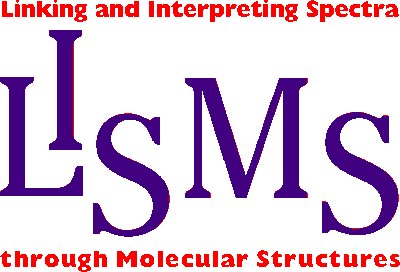
 |
The Need for an Analytical Reference Data Archive:A Resolution |
| If you believe you can support the ideas of this Resolution, passed at the Warwick meeting, please get it signed by a senior member of your company or institution (Company Director or Department Head) and by any learned societies that you belong to and forward to Dr. A.N. Davies at ISAS, Institute for Spectrochemistry, Postfach 10 13 52, 44013 Dortmund, Germany. |
|
3 September 1996 The chemical, pharmaceutical and materials industries are a major economic force and job provider in Europe. Keeping research and development abreast of the rest of the world is important to the scientific and economic success of Europe. Confirming and elucidating chemical structures are major tasks in the discovery and development of new products, in quality control and in environmental analyses. There are currently in excess of 14,000,000 registered chemical compounds, and more than 500,000 new ones are added each year. Although analytical data (from separation science and spectroscopic methods) are used during the synthesis, purification and identification of all of these compounds, few of the data are available, with the chemical structures, in a form useful to the academic or industrial analytical community. The largest electronic collections of analytical data represent 1% or less of the known chemical structures. It is estimated that as many spectra are recorded in industrial and academic laboratories in a single day as are contained in the largest electronic analytical databases. Nearly all of these spectra are discarded or are unavailable, even to those who acquired them. Access to large electronically stored collections of spectroscopic and separations data stimulates significant progress in chemical research and in automated methods for structure/spectrum and structure/biological-activity correlation. This has wide implications for human health, new materials, environmental protection, sustainable development and educational progress. Combinatorial chemistry is a major advance for discovering new materials and new chemical compounds for human health, crop protection or other uses. Rapid methods for confirming chemical identity depend critically on access to large analytical data sets. Time and money are often spent duplicating analyses of known compounds simply because archival data are not available. The efficiencies gained by enabling access to analytical data archives will contribute to maintaining competitive European industrial and academic research and development. It is unlikely that any single company or institute could take on the effort of building such an electronic repository. It is more appropriate that the initial funding stimulus for this project come from international public sources. Eventually the repository would become self-funding through fees for access to the data. However, without EU support, the project will not begin or achieve enough momentum to sustain itself. Because such a collection of analytical data would be an important European scientific resource, members of the European analytical chemistry community strongly encourage the European Union to include an electronic analytical data repository as a priority area in the forthcoming Fifth Programme. |